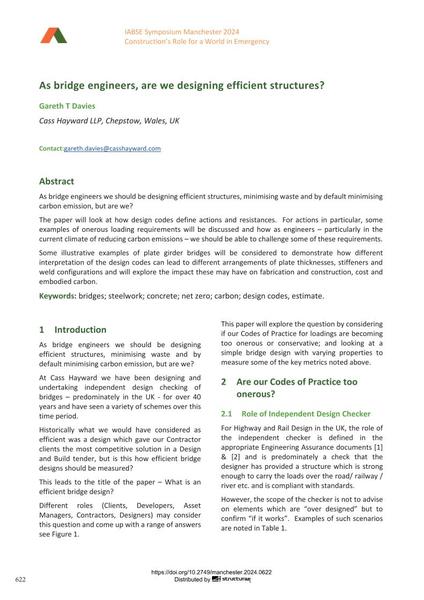As bridge engineers, are we designing efficient structures?

|
|
|||||||||||
Détails bibliographiques
| Auteur(s): |
Gareth T. Davies
(Cass Hayward LLP, Chepstow, Wales, UK)
|
||||
|---|---|---|---|---|---|
| Médium: | papier de conférence | ||||
| Langue(s): | anglais | ||||
| Conférence: | IABSE Symposium: Construction’s Role for a World in Emergency, Manchester, United Kingdom, 10-14 April 2024 | ||||
| Publié dans: | IABSE Symposium Manchester 2024 | ||||
|
|||||
| Page(s): | 622-630 | ||||
| Nombre total de pages (du PDF): | 9 | ||||
| DOI: | 10.2749/manchester.2024.0622 | ||||
| Abstrait: |
As bridge engineers we should be designing efficient structures, minimising waste and by default minimising carbon emission, but are we? The paper will look at how design codes define actions and resistances. For actions in particular, some examples of onerous loading requirements will be discussed and how as engineers – particularly in the current climate of reducing carbon emissions – we should be able to challenge some of these requirements. Some illustrative examples of plate girder bridges will be considered to demonstrate how different interpretation of the design codes can lead to different arrangements of plate thicknesses, stiffeners and weld configurations and will explore the impact these may have on fabrication and construction, cost and embodied carbon. |
||||
| Mots-clé: |
béton ponts
|
||||

